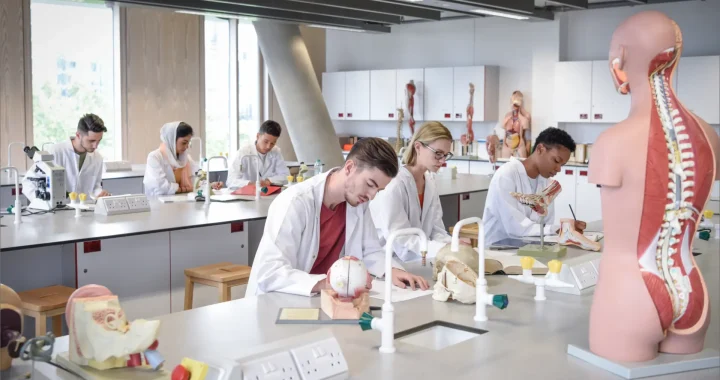The Vital Role of Doctors: Guardians of Health and Well-being

Doctors are often viewed as the unsung heroes of our society—tasked with the noble mission of healing and caring for the ill and vulnerable. Their work transcends the mere act of diagnosing and prescribing medication; it involves a deep commitment to understanding the complexities of the human body, a compassionate approach to patient care, and an ever-present responsibility to stay ahead in an increasingly advanced field of medicine. Whether in a bustling city hospital, a quiet rural clinic, or a research laboratory, doctors serve a pivotal role in ensuring the health and well-being of individuals and communities. This article aims to explore the importance of doctors, the diverse nature of their work, and the evolving challenges they face in modern healthcare.
The Multi-Faceted Role of a Doctor
The profession of medicine is far more diverse than many people realize. While the image of a doctor is often associated with the traditional roles of a general practitioner or a specialist in a hospital, the scope of what doctors do is vast. From primary care physicians who form the backbone of community health to researchers working at the cutting edge of medical science, doctors are involved in a range of activities that go beyond just treating illnesses.
In hospitals, doctors are often called upon to perform life-saving surgeries, manage critical care units, or oversee complex procedures. However, many doctors also spend considerable time engaging in preventive care, educating patients about healthy lifestyle choices, and addressing long-term health issues such as chronic conditions or mental health concerns. The holistic approach to medicine has gained prominence in recent years, with many doctors emphasizing the importance of not just curing disease but preventing it through healthy habits and regular screenings.
Moreover, doctors are increasingly taking on leadership roles in healthcare systems. They are involved in shaping public health policies, conducting medical research, and advancing healthcare technology. The rise of telemedicine, for example, has created new opportunities for doctors to deliver care remotely, particularly to underserved populations. This ability to adapt and evolve with technological advancements underscores the dynamic nature of the medical profession.
A Doctor’s Journey: Education and Training
Becoming a doctor is no small feat. The journey requires years of intense study, practical experience, and a deep commitment to mastering the complexities of human biology and medical science. In many countries, aspiring doctors must complete a four-year undergraduate degree, followed by four years of medical school. After medical school, they enter a period of internship and residency, where they receive hands-on training in specialized fields like surgery, pediatrics, or internal medicine. This process can take anywhere from 7 to 15 years, depending on the specialization, and is often accompanied by long hours, intense pressure, and the mental fortitude to deal with life-and-death situations.
The rigor of this training reflects the immense responsibility that doctors carry. They are tasked with diagnosing diseases, prescribing treatments, and making critical decisions that can determine the outcome of a patient’s life. This responsibility extends beyond just the physical health of patients; doctors also address mental, emotional, and social aspects of health. For instance, a pediatrician may spend time not only treating a child’s illness but also guiding parents on nurturing their child’s emotional development. In this way, a doctor’s education equips them with the skills to be caregivers in the truest sense.
The Doctor-Patient Relationship
The relationship between a doctor and a patient is one of trust, empathy, and open communication. A doctor’s ability to establish rapport with a patient plays a crucial role in the success of treatment. Medicine is not solely based on technical knowledge; it requires human connection. A doctor must not only be a skilled diagnostician but also a compassionate listener who can empathize with the struggles and fears of their patients.
Patients often come to doctors during some of the most vulnerable moments of their lives. Whether it’s a routine check-up or a diagnosis of a serious condition, the experience can be emotional and overwhelming. In these moments, a doctor’s ability to provide comfort, reassurance, and clarity can make all the difference. Communication is key, and doctors must explain medical terms in a way that patients can understand, addressing their concerns and making them feel heard and valued.
In recent years, the concept of patient-centered care has gained prominence, which places the patient at the center of decision-making regarding their health. This approach recognizes that patients are individuals with unique needs, preferences, and values, and it encourages doctors to work collaboratively with patients to develop treatment plans. This holistic and empathetic approach helps build stronger relationships and improves patient outcomes.
The Challenges Faced by Doctors
Despite the prestige and satisfaction that come with being a doctor, the profession is not without its challenges. In many parts of the world, doctors face long working hours, high patient loads, and the constant pressure to stay up-to-date with rapidly advancing medical knowledge. These stressors can take a toll on a doctor’s mental and physical health, leading to burnout, which is a significant issue within the medical profession. According to studies, a significant proportion of doctors report experiencing symptoms of burnout, including emotional exhaustion, depersonalization, and a reduced sense of accomplishment.
Burnout can have serious consequences, not just for doctors but also for their patients. A fatigued or stressed doctor may have reduced cognitive function, impaired decision-making abilities, and less energy to engage with patients. To address this, many healthcare systems are focusing on providing support for doctors, including mental health services, work-life balance initiatives, and team-based care models that help distribute the workload.
Moreover, the field of medicine is continuously evolving, and doctors must constantly adapt to new technologies, treatments, and research findings. This requires lifelong learning, as doctors must stay informed about the latest medical breakthroughs, innovations in healthcare technology, and emerging diseases. The COVID-19 pandemic, for example, underscored the need for doctors to rapidly acquire knowledge about novel viruses, new treatment protocols, and the best ways to manage public health crises.
The Future of the Medical Profession
As the world continues to change, so too will the role of doctors. The integration of artificial intelligence (AI) and machine learning in medicine is already reshaping diagnostic practices, and it is expected that AI will play an increasingly significant role in data analysis, disease prediction, and even robotic surgeries. However, despite these advancements, the human touch in healthcare will remain irreplaceable. While AI can analyze vast amounts of data, it lacks the emotional intelligence that a doctor brings to patient interactions. The future of medicine will likely be a blend of cutting-edge technology and compassionate human care, allowing doctors to make more informed decisions while maintaining the empathy and communication that form the foundation of their work.
Conclusion
Doctors are essential to the fabric of our society. They are the guardians of our health, both in times of illness and in moments of wellness. Their expertise, dedication, and compassion have a far-reaching impact on the lives of individuals, families, and communities. Yet, the demands placed on them are immense, and the challenges they face are ever-evolving. As the medical field continues to advance, doctors will remain at the heart of healthcare, navigating the complexities of science and human care with skill, knowledge, and unwavering dedication. Their role is indispensable, and society owes much of its health and longevity to their tireless efforts.

 Can Online Doctors Help During Pandemics?
Can Online Doctors Help During Pandemics?  The Role of Supplements in Modern Health: A Balanced Perspective
The Role of Supplements in Modern Health: A Balanced Perspective  Which delta 9 gummies are known for their potency?
Which delta 9 gummies are known for their potency?  The Art of Healing: A Comprehensive Look at Modern Treatments and Approaches
The Art of Healing: A Comprehensive Look at Modern Treatments and Approaches  The Evolution of Medical Science: From Ancient Remedies to Modern Breakthroughs
The Evolution of Medical Science: From Ancient Remedies to Modern Breakthroughs